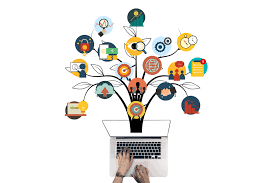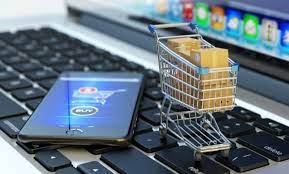Introduction
The marketing mix basically consists of four elements: product, price, place, and advertisement or publicity. These elements are used by the marketer or marketing officials in an activity to market the intended product or service
The product can be defined as the item that is provided for sale for the purpose of satisfying or fulfilling the customer’s wants and needs in a specific range, in addition to the characteristics of a successful product by providing a solution to the customer’s problems regarding a problem, working to create a product with an attractive shape and elaborate design are also important factors for product promotion and his success
Hence, we can distinguish between goods, services, and ideas
Goods are a physical product that can be delivered to the buyer and involves the transfer of ownership from the seller to the customer
Service is a non-physical action that results in a measurable change in the condition of the buyer due to the supplier
Ideas (intellectual property) are any creation of the mind that has commercial value, but is sold or traded only as an idea, not as a service or resultant good. This includes copyrighted property such as literary or artistic works, and intellectual property, such as patents, appellations of origin, working methods and industrial processes
Table of contents
What is the product, and what are its ratings
What are the types of products
What are the characteristics of a successful product and product development factors
What is product marketing
Seven distinct steps to product marketing
What is the product and what are its ratings
In general, a product is defined as “something produced by labor or effort” or “the result of an act or process. The word 'product' is derived from the verb 'produce', the word 'producer' refers to anything that is produced
In marketing, a product is anything that can be offered to a market that may satisfy a desire or need. In retail, products are called merchandise. While in manufacturing, products are purchased as raw materials and sold as finished goods
As for the product classifications, they differ in terms of
By use or sharing
The retailer divides its products into “sections,” then presents the products to potential shoppers according to the function or brand. Each product contains an item number and manufacturer model number. Shops use sections and product groups to help customers browse products by function or brand within a traditional department store structure.
Product Design
This is the process of creating a new product to be sold by a company to its customers. It is the generation and development of ideas efficiently and effectively through a process that leads to new products
The process of designing a new product (or updating features of an existing product) is usually completed by a group of people, designers, field experts in the product they are creating, or specialists for a particular component of the product
design process
This follows the Guidelines and has three main sections: Analysis, Concept, and Synthesis – in an ongoing feedback loop. Themes and features play a role in the three sections
Analysis: Here, the designers decide to stick to the project and find a solution to the problem. They pool their resources to determine how to solve the task most efficiently. Everyone on the team starts looking for what the product should look like to achieve the goal
Concept: The main issue of the issue is identified. The conditions of the problem become goals, and the constraints of the situation become the criteria by which the new design must be built. The concept stage is where ideas for new features are considered
Synthesis: Designers brainstorm different solutions to their design problem. Once they narrow down their ideas to a select few, they can define their plan for making the product. Prototypes are created, the plan described in the previous step is implemented and the product begins to become a real object

What are the types of products
There are many approaches or angles through which the product can be viewed and classified on the basis of it, some of them depend on the type of product and its physical condition, and others depend on the classification of the product on the basis of consumer evaluation of the product and the financial value or price of the product ,You may be interested to see the 9 most important different things between marketing and sales
In all cases, and with the various angles or bases of product classification, we review here some of these classifications and start classifying according to the physical condition of the product
physical product
These are tangible items, for example electrical or electronic appliances, books, cars and others
immaterial product
These are non-material elements, i.e. lacking physical features compared to physical products, such as trademarks, trade names, bank accounts, intellectual property rights, etc
The right product
This product represents the least effort and risk for the customer, meaning that the customer will not take a lot of money and time to acquire these products, and the level of risk that he bears when acquiring this product remains minimal
Examples of this are fresh products, foodstuffs, gums and batteries, in addition to the possibility of including raw materials as goods suitable or suitable for industry
Favorite product
This type of product requires greater effort on the part of the consumer (time and money) in addition to a greater risk factor as a result of the advertising, pricing and marketing operations carried out by the producing company.
A common example of this type of product is canned products, such as toothpastes and drinks, where the customer may “prefer” the acquisition of a certain type of drink or toothpaste based on a picture or advertisement he saw
Shopping product
It is the product or products that outlive some and the consumer does not accept to buy it periodically, in which the customer or consumer compares between several brands to choose the most appropriate ones because of their high price compared to the soft products
Some of these goods include cars, some electronic items, household items, homes, and others
specialized product
It is a distinct product or products with special specifications that the customer seeks to search for in order to buy them in particular instead of the search and comparison process that he conducts when buying shopping goods, i.e. the customer’s tendency from the beginning to acquire this particular commodity and not others, despite the difficulty of obtaining it sometimes for one reason or another. The high price, for example, or its presence in specific places)
These products rank higher in the stress and risk curve
Examples of these goods are phones, cars of a specific brand, or paintings by a particular painter

What are the characteristics of a successful product and product development factors
Before addressing the various aspects of the product, these are the most important characteristics that must be present in it ,You might be interested to see what is promotion
It provides a solution to the customer's problems, needs and desires
The product is easy to use for customers
To provide a better user experience
It should have an acceptable and attractive visual design
Low cost to get better profit margin
The pricing of the product should be in accordance with the quality of the product
What are the factors for successful product development
Why do some new products fail and fail to achieve the purpose for which they were made
Many companies struggle to figure out how to increase the odds of the success of their new product, and according to various studies, the secret of a successful new product depends on several factors including
Develop a unique and superior product with new features, focusing on value and high quality
Defining and studying the concept of the new product, in terms of the objective, market and advantages, in a precise and specific way before starting to develop it, and this of course puts on the company's development team the burden of evaluating the target product markets, their requirements and benefits
Senior management commitment to innovation and efficiency when implementing new product development

What is product marketing
Product marketing is the process of bringing a product to the market. This includes positioning the product and its messages, launching the product, and ensuring that salespeople and customers understand it. Product marketing aims to increase demand for and use of a product ,You may be interested to see the pricing policy and its types
The important thing is that product marketing doesn't stop once the product hits the market (if it did, well, product marketers in a single product company wouldn't have much to do after the product was launched)
The product marketing process continues well after its launch to ensure that the right people are aware of the product, that these people know how to use it, and that these people's needs and feedback are listened to throughout the lifecycle of the product
A great product means nothing if it doesn't grab the attention of the people who will benefit from it. So, who is your audience for this product? How (and where) do you reach them, and what story do you tell about introducing this product to them? When preparing for a product launch, working with the rest of the marketing team to identify your customer and these messages is critical

Seven distinct steps to product marketing
When product marketers know exactly who is catering to their products, marketing can begin. Here are seven things product marketers may do before, during and after their product enters the market ,You may be interested in looking at the top 5 types of clients you need to know their personality
Product Research: A useful and well-made product is not made in a vacuum, nor is it marketed in a vacuum. In the weeks and months leading up to a product launch, product marketers work with product developers to test the product internally and externally through controlled beta environments
Product Story: Products are also presented in the market in the form of a story. What problem does the product solve? Who is facing this problem? How do you solve this problem? What are you doing that your competitors don't
Product Focused Content: The next stop for product marketing is the content creators' offices. Here, product marketers may create and A/B test various marketing copies, blog content, case studies and landing pages on their website – all of which are meant to describe the product verbatim
Product launch plan: No product marketing team is complete without a written launch plan, detailing every last stage of the marketing process and who is responsible at each stage
Product launch meeting: When the product is launched, everyone involved meets on launch day. Much like launching a rocket, this is a product marketer's best hour – it's the height of a product marketing campaign
Community involvement: Since product marketing generates enough buzz about the product within the industry, it is common for the marketing team to take advantage of what the market has to say about them. This includes reaching out to existing partners, influencers, and customers for comment
Sales Empowerment: While preparing a product for market, the sales team in the wings waits to develop a sales strategy around this new business opportunity. The task of the product marketing team is to interview the sales staff before, during and after the product is released to the public. This ensures that the messages generated for this product are consistent all the way up to the first sales call
As you develop your product marketing team and product marketing strategy, think about how you will shape the above elements, and who you will need to work with to make it successful
Conclusion
If you want to use any of the professional e-marketing and social media advertising companies, you can contact the digitsmark team
Where we offer you a group of specialists in professional web design services, social media services and many diverse digital marketing services
Hurry up to contact us through our various digital platforms, or visit the digitsmark website on the Internet
Articles you may be interested in reading on our blog
Your guide to professionally photographing your products.
What are the seven elements of the marketing mix?
What is affiliate marketing and what are its features?
The most important steps needed to build a business identity?
The Seven Necessary Skills in E-Marketing
Marketing campaigns
Content Marketing
What's the online markiting
Improve visibility on search engines







